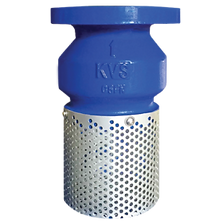
In many industrial processes and systems, maintaining the purity of fluids is crucial for safe and efficient operations. Even tiny particles or contaminants in liquid or gas flow lines can wreak havoc – clogging pipes, damaging equipment, and compromising product quality. This is where strainer valves come into play as an essential line of defense against contamination.
What are Strainer Valves?
Strainer valves are specific valve types that use a strainer screen or mesh to filter out unwanted solid particles from fluid flow. Unlike regular valves that simply regulate flow, strainer valves have the added functionality of catching debris, dirt, rust, and other contaminants before they can enter downstream pipes, pumps, instruments, or process equipment.
The strainer element is the key component, typically made from woven wire or perforated sheets with precise micro-openings. As fluid passes through the strainer valve body, this screen traps any particles larger than its pore size, only allowing clean fluid through to the outlet side.
How Do Strainer Valves Work?
The working principle of a strainer valve is quite simple yet effective. Fluid enters the valve body through the inlet under system pressure. It then encounters the strainer screen which blocks the passage of solid contaminants while permitting liquid or gas to flow across the screen’s micro-openings to the outlet.
Over time, the trapped particles of matter accumulate on the strainer screen. This reduces flow and increases the differential pressure across the valve. Regular cleaning or screen replacement is required to restore full flow capacity.
Applications of Strainer Valves
Strainer valves are extensively used across numerous industries where even minor contamination can severely impact processes and equipment integrity:
Oil & Gas: Protecting subsea pipelines, wellheads, separators from debris, sand, formation fines.
Chemical Processing: Preventing solids entry into reactors, distillation columns, heat exchangers.
Power Generation: Filtering fuel gases, steam lines, and cooling water circuits.
Water/Wastewater Treatment: Removing grit and sediments from intake lines.
Food & Beverage: Straining out particulates from liquid product lines.
By keeping solid contaminants out, strainer valves safeguard sensitive instrumentation, prevent equipment erosion/clogging, and ensure product purity is maintained.
Importance of Maintenance
Like any other strainer or filter, strainer valves require periodic cleaning and maintenance to retain their contamination-prevention capabilities. As debris builds up, the differential pressure increases, choking flow and eventually rendering the valve ineffective if not serviced.
During maintenance, the strainer screen is removed, cleaned or replaced if damaged. Some strainer valves have a blow-down valve to discharge collected contaminants. This maintenance frequency depends on the level of particles in that service.
Proper maintenance of strainer valves is critical to ensure uninterrupted production flows while providing continued protection against contamination ingress.
Final Words
Strainer valves play an essential function in safeguarding industrial processes, equipment and product quality by preventing solid contaminants from entering fluid streams. By filtering out particulates at the source, these strainer valve strainer valves mitigate the risks of erosion, clogging, fouling and contamination – enhancing operational reliability, safety and efficiency across diverse industries. With the right materials, sizing and maintenance practices, strainer valves are ultra-reliable contamination barriers.